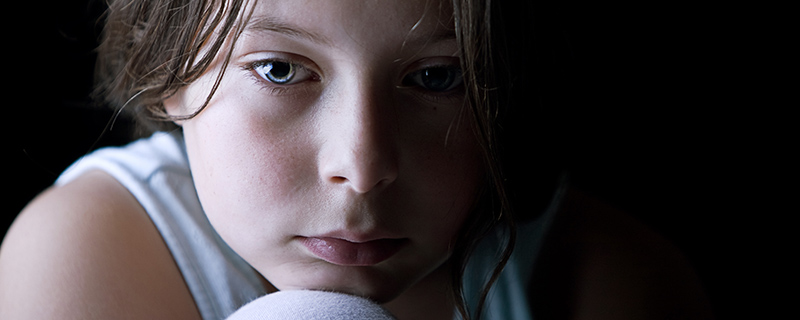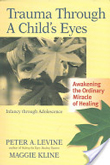
Although children’s safety is a high priority in our families and communities, many children experience trauma, including sexual, physical, and emotional abuse, abandonment by or loss of caregiver(s), chronic and severe neglect, domestic violence, community violence, and life-threatening accidents, illnesses, and disasters. Traumatized children often recover with the support of adults who care for them, but they also may develop problems in relationships with their families and peers and in school.
Research suggests that these types of trauma can change how children’s bodies react to stress, which leads to a shift in how their brains work. Under healthy conditions, children’s brains are focused on learning—exploring their world, enjoying other people, developing new knowledge and abilities. Traumatized children’s brains become focused on survival—worrying about real or imagined dangers, staying turned on all the time, or turning off and shutting down. Traumatized children’s brains are not damaged or broken. Their brains actually are very strong, strong enough to be on high alert for long periods of time. What begins as attempts to mobilize brain and bodily systems to survive trauma becomes a brain stuck in “alarm” state.
The positive news is that there are therapies that can help traumatized children to recover from this state of feeling constantly stressed by teaching them practical ways to get their brains back in “learning” mode instead of staying stuck in the “survival” state.
Julian D. Ford, Ph.D.
Department of Psychiatry and Graduate School
University of Connecticut Health Center
Learn More
Featured Reading
Trauma Through a Child’s Eyes: Awakening the Ordinary Miracle of Healing
 Peter Levine and Maggie Kline, 2006
Peter Levine and Maggie Kline, 2006
An essential guide for recognizing, preventing, and healing childhood trauma, from infancy through adolescence—what parents, educators, and health professionals can do. Trauma can result not only from catastrophic events such as abuse, violence, or loss of loved ones, but from natural disasters and everyday incidents such as auto accidents, medical procedures, divorce, or even falling off a bicycle. At the core of this book is the understanding of how trauma is imprinted on the body, brain, and spirit, resulting in anxiety, nightmares, depression, physical illnesses, addictions, hyperactivity, and aggression. Rich with case studies and hands-on activities, Trauma Through a Child’s Eyes gives insight into children’s innate ability to rebound with the appropriate support, and provides their caregivers with tools to overcome and prevent trauma.
AAP Lending Library
View books and DVDs on Trauma and Brain Development available to borrow
Online Learning
Tough Starts: Brain Development Matters
Online course offered by Adoption Learning Partners
Brain Development Matters thoroughly explains the impact that early trauma has on a child’s brain chemistry, brain development, and sensory processing. Once parents understand how their child’s brain is connected to his behaviors, these behaviors begin to make more sense. With a thorough understanding of brain development, parents are better prepared to learn how to more successfully intervene and shape their child’s troubling behaviors.
Articles and Websites
Child Trauma Academy
Offers consultation, education and training services to assist individuals and organizations in their work with high-risk children.
Children’s Emotional Development is Built into the Architecture of their Brain
National Scientific Council on the Developing Child, August 2011
Excessive Stress Disrupts the Architecture of the Developing Brain
National Scientific Council on the Developing Child, June 2009
The Impact of Abuse and Neglect on the Developing Brain
An article by Bruce Perry, M.D., Ph.D., on scholastic.com
Supporting Maltreated Children: Countering the Effects of Neglect and Abuse
Adoption Advocate No. 48, National Council for Adoption, June 2012
Supporting Brain Development in Traumatized Children and Youth
Child Welfare Information Gateway, September 2017
Understanding the Effects of Maltreatment on Brain Development
Child Welfare Information Gateway, April 2015
What is Complex Trauma: A Resource Guide for Youth and Those Who Care About Them
The National Child Traumatic Stress Network, 2017
Recommend an article or other resource
Please note: The Adoption Assistance Program (AAP) does not promote or endorse any websites, organizations or individuals that may be linked from this site. The AAP does not guarantee the accuracy of the information or the appropriateness of advice for a particular situation. It is our intent to assist users in their search for reliable and useful sources of information pertaining to adoption, legal guardianship, and parenting.